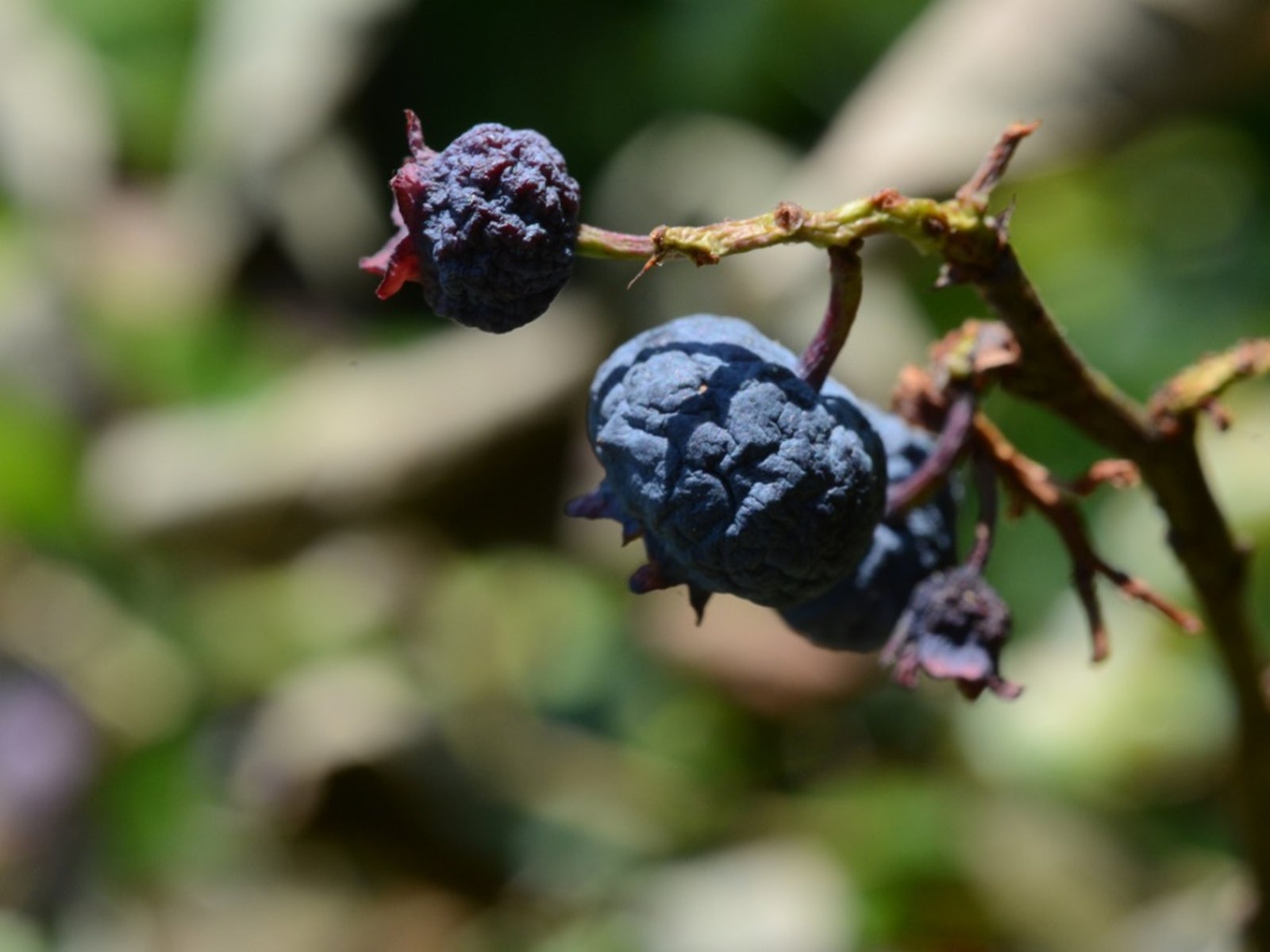
Mummified blueberries are not Halloween party favors but are actually signs of one of the most destructive diseases affecting blueberries. Mummified or dried out blueberries are only one stage of the disease that, if left unchecked, can destroy an entire blueberry crop. So, what exactly is blueberry mummy berry, and can it be controlled? The following article contains blueberry mummy berry info regarding blueberries with mummified berries.
What is Blueberry Mummy Berry?
Mummified blueberries are caused by the fungus Monilinia vaccinii-corymbosi. Primary infections begin in the spring, arising from overwintering mummies. At this time, tiny mushroom-like structures called apothecia begin growing from mummified berries. The apothecia release spores, lots of them, which are then carried by wind to leaf buds.
Symptoms of a Blueberry with Mummified Berries
The first symptom of a blueberry with mummified berries is browning along the leaf veins on new leaves. These leaves wilt and curve. A light gray powdery mat of spores develops at the base of the leaf. These spores, in turn, infect flowers and fruit. Infected berries become slightly ridged, rubbery, and a pinkish tan in color as the fruit begins to ripen. The interior of the berries contains a gray fungal mass. Eventually, the infected berries fade, shrivel, and drop to the ground. Once the exterior of the fruit sloughs off, the infected berries look like small black pumpkins.
Additional Blueberry Mummy Berry Info
The fungus overwinters in mummified blueberries on the ground and then begins to grow in the early spring as the leaf buds begin to open. Tiny, trumpet-shaped brown mushroom cups begin to protrude from the dried-out blueberries. This fungal disease may not appear until years after planting. Once it does make an appearance, control measures need to be taken every year. To control mummy berry, ideally, plant resistant varieties but in lieu of that, thoroughly rake under the blueberries in the early spring prior to bud break to remove as many mummified berries as possible. Do a thorough job, as mummies may be partially hidden in the soil, mulch, or leaf debris. Also, apply a couple of inches (5 cm.) of mulch to bury any remaining fallen mummies. You may also choose to apply urea, lime sulfur, or a concentrated fertilizer beneath the blueberry bushes to try and “burn” out any exposed apothecia. This last cultural practice can be a bit tricky since the application has to be timed just right to be effective. Keep a close eye on the blueberries. If you see any apothecia, you may need to apply a fungicide. Fungicides also are time sensitive and must be applied at primary infection, early in the spring at bud break. New growth is still susceptible until the shoots are a couple inches (5 cm.) in length, so reapplication of the fungicide is crucial. Reapplication should occur about every week depending upon the fungicide. As always, read the manufacturer’s instructions and follow them.
Sign up for the Gardening Know How newsletter today and receive a free copy of our e-book "How to Grow Delicious Tomatoes".

Amy Grant has been gardening for 30 years and writing for 15. A professional chef and caterer, Amy's area of expertise is culinary gardening.
